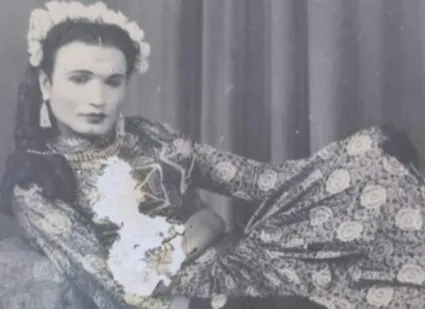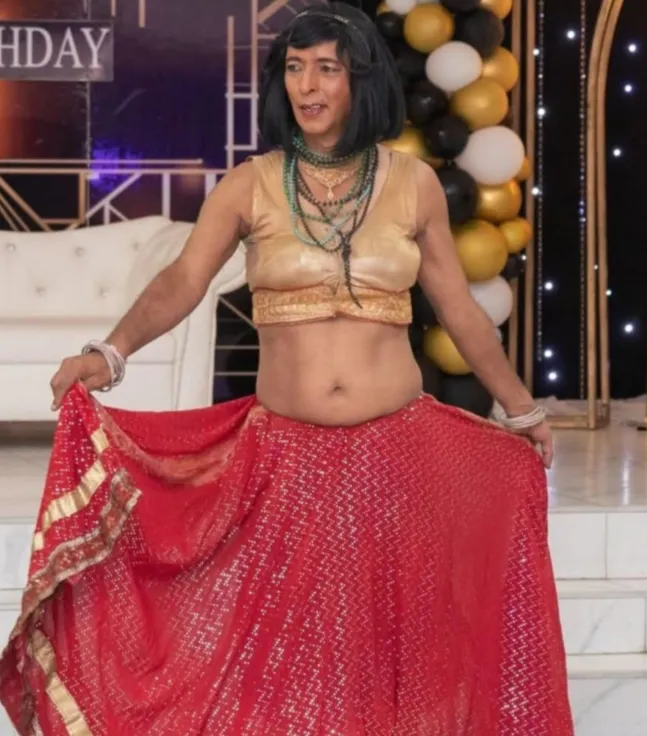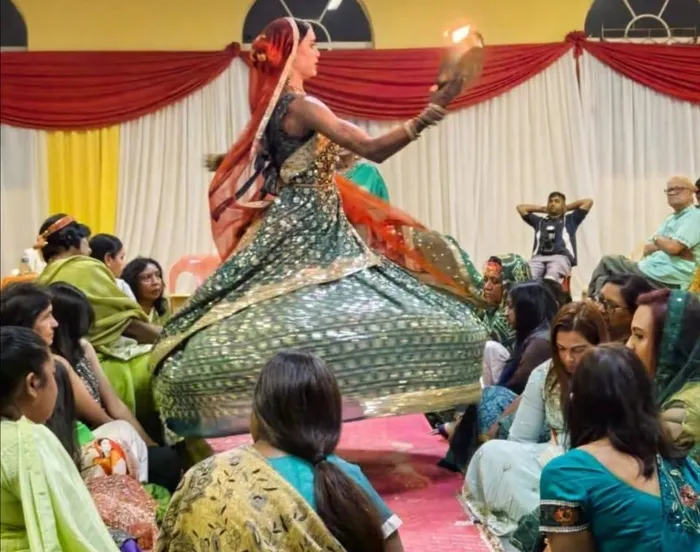Navin Sewlal revives the Riverside Sanathan Dancing Company
Wigs and jewellery

Ronnie Dwarka performing in 1956, the Riverside Sanathan Dancing Company's legend.
Image: Supplied
NAVIN Sewlal, a molding technician from Tongaat, carries a vibrant cultural heritage with him after he revived the Riverside Sanathan Dancing Company, which was founded in 1938.
The revived group was renamed the Riverside Sanathan Dancing Company: Next Generation but the style and music, said the 52-year-old father of three, remained the same.
Sewlal is determined to preserve and promote the unique Indian musical and dance traditions of chutney and nagara, ensuring these art forms continue to thrive in his community.
“Nagara is often misunderstood. It is actually a reference to the drums used during performances. What many people see on stage is a chutney dancer, a performer who dances and sometimes sings to this vibrant genre of Indian cultural music. The dancer is usually a male dressed in female clothing and adornments.”
Sewlal said chutney and nagara music originated as cultural entertainment for traditional occasions such as pooja (prayer) ceremonies, weddings, and other celebrations.
“Back in the day, when audio equipment was not available, our forefathers used instruments like the sarangi, harmonium, mandolin, tabla, and nagara drums. These traditional folk instruments did not need any electronic enhancement.
"The music traces its roots back to India and was introduced by the Hindi-speaking community, brought to South Africa by indentured laborers who passed down the art through generations. This genre is still alive worldwide wherever Indian communities have settled, though there are slight variations depending on the location.”
Over time, the performance style has evolved.

Niresh Mohan, one of the Riverside Sanathan Dancing Company: Next Generation, nagara dancers.
Image: Supplied
“Originally, dancers were fully-clad in traditional attire, complete with crowns and elaborate adornments. Today, many performers wear modern outfits, extravagant wigs, and jewellery, reflecting a blend of traditional and contemporary influences."
He said chutney and nagara music remained an integral part of the Hindi community’s religious and social life.
“Religious institutions often rely on these bands for prayer renditions like bhajans and kirtans, while the chutney jol is still the most popular entertainment for wedding eves."
Sewlal said his band, the Riverside Sanathan Dancing Company: Next Generation, which he started in 2023, revived the legacy of the Riverside Sanathan Dancing Company, founded in 1938 by the late Guru Jagunadhan Bandan.
“The original band combined traditional music with theatrical performances adapted from the Ramayan and other epics, blending comedy, drama, chutney, and folk music. We aim to carry forward this legacy and bridge the old traditions with the modern generation.”
Though Sewlal said chutney and nagara dance were practised globally in India, Trinidad, the Netherlands, and elsewhere, it had taken on a unique Bollywood flair locally.
“The younger generation has embraced this culture wholeheartedly with many school-going members now part of various bands.”
Sewlal said that social perceptions of gender have not found a place in his group.

One of the Riverside Sanathan Dancing Company: Next Generation's performances.
Image: Supplied
“Homophobia is not really an issue here. The dance and dressing are well accepted, and many dancers have a strong fan base. There is a common misconception that all the dancers in such attire are gay, but many are parents and grandparents performing strictly for the love of the culture.”
However, Sewlal said Western influences have impacted the music and dance styles and costumes have evolved.
“Organisations such as the South African Hindu Dharma Sabha have documented and archived our cultural heritage. I hope people develop a deep appreciation for our proud culture.
“I want my group to leave behind a lasting legacy that honors our forefathers and connects the old traditions with our modern generation. Though I am relatively inexperienced, I am passionate about continuing this proud heritage," said Sewlal.